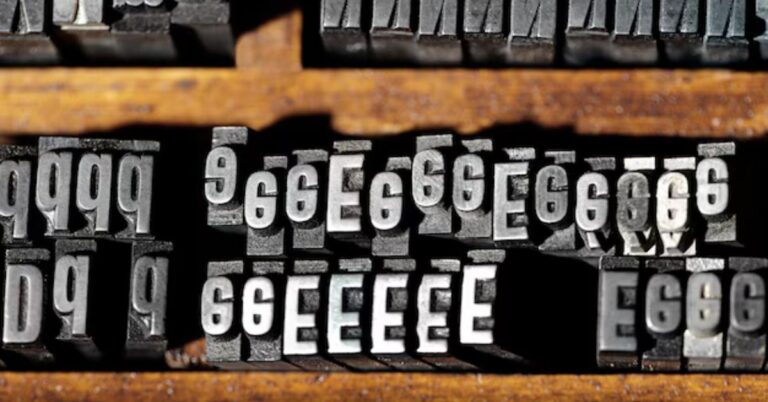Understanding the Importance of “ph-a45_bk_16-thumb.jpg” Thumbnail Image
In the modern age of digital content, images play a critical role in communicating information, evoking emotions, and engaging audiences. The term “ph-a45_bk_16-thumb.jpg” refers to a small, often compressed version of a larger image or graphic that serves as a preview or representation of the full-sized file. These images are crucial in various online platforms, including websites, social media, and e-commerce platforms, as they provide users with a visual cue that guides their decision-making process.
In this article, we will explore the importance of thumbnail images, specifically using the example of “ph-a45_bk_16-thumb.jpg.” While the image name itself may appear to be a simple identifier, it has a deeper connection to digital content and marketing. Through examining the role of thumbnail images, their design, and their impact on user behavior, we will highlight how this seemingly minor visual element can have a significant influence on the overall user experience.
What Is a ph-a45_bk_16-thumb.jpg?
A thumbnail image is a reduced-size version of a larger image file, which serves as a preview or visual representation of the content it refers to. The term “ph-a45_bk_16-thumb.jpg” comes from the idea that the image is roughly the size of a thumbnail, the small, square part of the finger. ph-a45_bk_16-thumb.jpg These small images provide an efficient way to present multiple visual elements within a limited space, often with an option to click for a larger view.
Thumbnails are commonly used in various online platforms and digital applications, including websites, galleries, social media platforms, and video streaming services. They serve as an introduction to the content, offering a glimpse of what lies beyond the initial view. For instance, in video platforms like YouTube, thumbnails are used to draw the viewer’s attention and entice them to click on the video.
Why Are Thumbnail Images Important?
Thumbnail images serve several critical functions in the world of digital media and design. While they may appear to be simple and straightforward, their impact on user engagement is immense. ph-a45_bk_16-thumb.jpg are often the first impression that a user has of the content, and a well-designed thumbnail can drive significant traffic, increase engagement, and ultimately lead to better conversion rates.
Facilitating Navigation and Organization
Thumbnails are an essential component of navigation in digital environments. On websites, galleries, and social media platforms, they allow users to quickly scan through content and find the items that interest them. Instead of requiring users to read lengthy descriptions or titles, thumbnails offer a visual shortcut to content. For example, the image named “ph-a45_bk_16-thumb.jpg” could represent a product in an online store, providing customers with a visual preview of the item they are interested in.
This efficient organization of content allows users to filter out irrelevant material and focus on the most appealing options, enhancing their browsing experience. A well-organized layout with engaging thumbnails improves the likelihood of a user interacting with the content.
Enhancing User Engagement
Thumbnails are powerful tools for capturing the attention of potential users. In an environment flooded with digital content, users are often bombarded with a myriad of choices. ph-a45_bk_16-thumb.jpg help make those choices more visually appealing, sparking curiosity and engagement. An attractive and compelling thumbnail can encourage users to click and explore the content further.
For example, in the case of “ph-a45_bk_16-thumb.jpg,” if it represents a product thumbnail, a well-crafted image could capture the attention of potential customers, prompting them to take a closer look at the product page. Similarly, on video-sharing platforms, a thumbnail that clearly conveys the essence of the video can influence a viewer’s decision to click and watch.
Providing Context for the Content
Thumbnails provide immediate context for the content they represent. Without reading a detailed description or engaging with a page for several minutes, users can quickly grasp what type of content is being offered based on the thumbnail image. For example, in an online store, a thumbnail image like “ph-a45_bk_16-thumb.jpg” could visually convey what the product looks like, allowing the user to determine whether it meets their needs or interests.
For video platforms, the thumbnail acts as a teaser, offering a snapshot of the video’s subject matter or key scenes. This preview serves as an invitation, compelling users to engage with the content.
Design Considerations for Thumbnails
While the purpose of thumbnails is to provide a preview of content, there are several important design considerations that contribute to their effectiveness. Thumbnails need to be optimized in terms of size, clarity, and relevance to ensure they achieve their intended purpose.
Size and Resolution
A thumbnail image, like “ph-a45_bk_16-thumb.jpg,” needs to strike a balance between being small enough to load quickly while also maintaining enough resolution to remain clear and visually appealing. Ideally, a thumbnail should not be too large, as it could slow down the loading speed of a website or digital platform. However, it should be of sufficient resolution to allow users to see enough detail to make an informed decision about whether they want to click through to the larger content.
Most platforms have specific recommended dimensions for thumbnail images, such as YouTube’s 1280x720px for video thumbnails. These size recommendations help ensure that thumbnails are optimized for various devices and screen sizes, enhancing the user experience across desktop, tablet, and mobile devices.
Visual Clarity and Composition
To be effective, a thumbnail image must be visually clear and composed in a way that draws attention. If the image is blurry, poorly cropped, or visually cluttered, it will fail to entice users to engage with the content. The image should be crisp and clean, with a clear focus on the main subject.
For example, a thumbnail like “ph-a45_bk_16-thumb.jpg” might need to emphasize the most important aspect of the content, whether it’s a product, person, or scene. Strong focal points, proper lighting, and good contrast all contribute to the clarity and impact of the image.
Consistency with Brand or Content Theme
Thumbnails should reflect the overall branding or theme of the content they represent. Whether it’s a product image, a blog post preview, or a video thumbnail, consistency in visual style helps users easily recognize content from the same source. This consistency strengthens brand identity and enhances the overall user experience.
In the case of “ph-a45_bk_16-thumb.jpg,” if it represents a product in a series or a line, the design of the thumbnail should align with other product thumbnails in terms of color, font, and overall aesthetic. This helps create a unified look and feel across the platform or website, making it easier for users to navigate and recognize familiar items.
The Impact of Thumbnails on SEO
Thumbnails, while primarily a visual tool, can also have a significant impact on search engine optimization (SEO). Optimized thumbnails contribute to better indexing and ranking on search engines. When a thumbnail is linked to relevant content, it can drive more clicks, leading to higher visibility in search results.
For platforms like YouTube, thumbnails are a direct factor in video SEO. A well-designed and relevant thumbnail can improve a video’s click-through rate (CTR), signaling to the algorithm that the content is engaging and valuable to users. Similarly, e-commerce platforms can leverage optimized thumbnails to attract more visitors to product pages, which can result in higher conversion rates and sales.
Conclusion
Thumbnail images like “ph-a45_bk_16-thumb.jpg” may seem like small, secondary elements in the vast landscape of digital content, but they are, in fact, powerful tools in guiding user engagement, improving navigation, and enhancing the overall digital experience. By providing users with a visual preview of the content, thumbnails make it easier to access relevant information and help create a more streamlined browsing experience.
A well-designed thumbnail can serve as an invitation to explore further, leading to increased interaction, better conversion rates, and stronger user satisfaction. Therefore, whether it’s for e-commerce, video content, or other types of digital media, investing in thoughtful, optimized thumbnail images is crucial for success in today’s competitive digital world.







